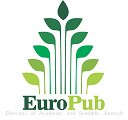Kajian Program Kesehatan dan Keselamatan Kerja (K3) Rumah Potong Hewan (RPH) di DKI Jakarta
Abstract
The slaughterhouse is responsible for the Occupational Safety and Health of the workers and other people related to the activities. The purpose of the study was to examine the implementation of the Occupational Health and Safety program at abattoir in DKI Jakarta. This study uses the Hazard Identification, Risk Assessment, and Risk Control (HIRARC) method as a guideline for identifying potential hazards and health problems in slaughterhouses. The results of the hazard severity assessment (Severity) based on risk analysis and risk evaluation show that the percentage of the impact of very light risk is 7%, light risk is 34% the impact of currently risk is 34%, the impact of heavy risk is 21% and the impact of fatal risk is 3%. The probability of an accident (likelihood) in the three abattoirs shows that abattoir C is less likely to have an accident with a percentage of 53%. The smaller of production capacity of an abattoir, the less likely an accident will occur. Risk control can be carried out by elimination, substitution, technical
control, administrative control, and the use of Personal Protective Equipment (PPE).















